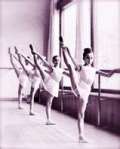 What to do when your costumes arrive
What to do when your costumes arrive
After hours and weeks (oh.. about two months of work for me because I am so fussy), of selecting just the right costumes for the dancers in late summer and early fall, those boxes start arriving around winter break. The dancers see these large cardboard boxes entering the dance room and they know that their costumes have arrived. With months of anticipation, they are so excited and very ready to try them on and dance in them for the first time. When the costumes get home here are some suggestions that will make your performance days run much more smoothly.
In the past few years, costume manufacturers have been making things much easier with shipping costumes on hangers and in zippered garment bags. Bravo! for those manufacturers. But not all of them have gotten the idea yet and still ship costumes rolled up in plastic bags. When the costume arrives home, it is a good idea to place it on a hanger and slip a kitchen size plastic garbage bag over it and let it hang. A zippered garment bag is ideal for this, as accessories can be places at the bottom or the bag.
Do not iron your costumes. Even a cool iron can scorch it. You can place your costume in a steamy bathroom and most of the wrinkles will drop out. A steamer is also a great idea if you have one to get out the wrinkles with out harm to the costume. Place short tutus on a flat surface to help them maintain their shape. Hang romantic style skirts – long tutus – upside down to keep them full and fluffy.
Make sure you have all of the pieces for your different, dance costumes that you will be wearing. It is a good idea to have a practice “dress up” at home so you can remember how all the pieces go. Make a checklist and include everything you will need from head to toe. There is nothing worse than to arrive at the dressing room and then find out that you left a costume piece at home.
Some schools will supply a check list with each costume. Teachers may want the headpiece a certain way, or gloves worn . If not, make your own check list . Begin with the shoes and correct color, what color tights and what style is needed. Does the costume need to have a tutu, skirt or sash stitched in place? Do the straps need to be adjusted? Do not allow extra strap length to poke out of your bodice. I am not one for safety pins unless in an emergency, I suggest that you sew all pieces on your costume that needs to be sewn….not pin them. In my years of dance revues, recitals and dance concerts, I have seen costume pieces fall off, and even tops fall down…..
Be sure you have a body liner and that it fits properly. Body liners are perfect undergarment for your costumes. They allow for modesty in the dressing rooms and for “accidents” on stage. You school will inform you as to what age dancers should be wearing a body liner.
Be sure to check to see that you understand how your headpiece is to be worn, and bring the proper hairpins or attach a chin elastic, if requested to do so, to fasten it into place. Give your head a good shake when you’re done, to be sure the headpiece stays in place. It’s hard to dance with ribbons and flowers flopping loosely around your head!
One of the most important things is to label all costumes and their accessories. There will be a number of dancers in your dressing room the day of performance and with many dancers with quick changes, accessories and even whole costumes tend to get mixed up. Keep your costume’s accessories together with your costume. One good idea is to have a zip lock bag with each costume and puncture a hole in it to fit over the hanger. Place gloves, mitts, small headpieces in it to keep everything together and organized.
Start preparing your costumes one at a time as they arrive home…it will keep the stress level down and you will keep your joy…..






